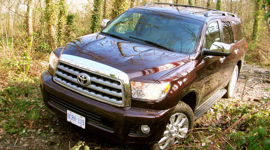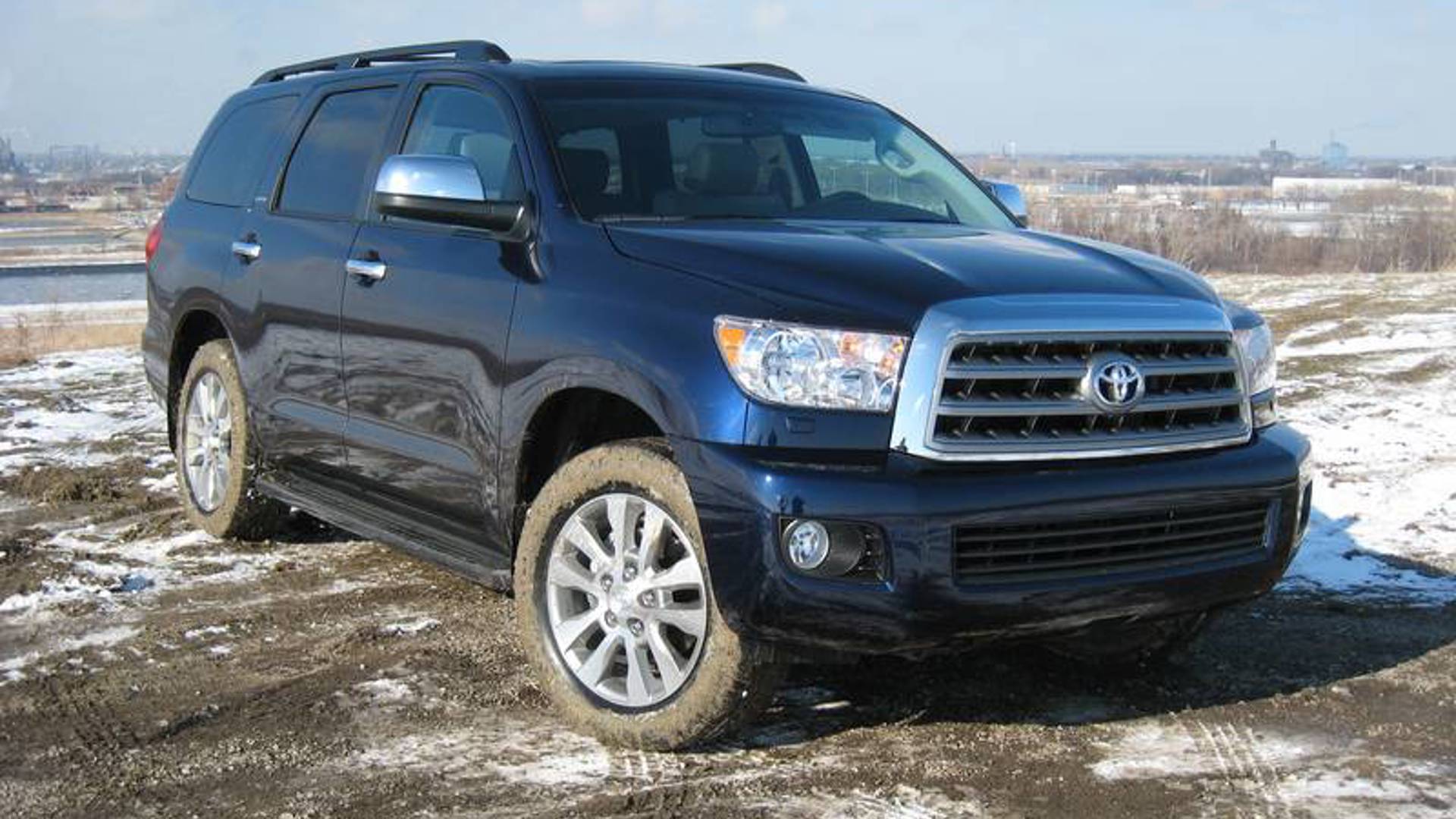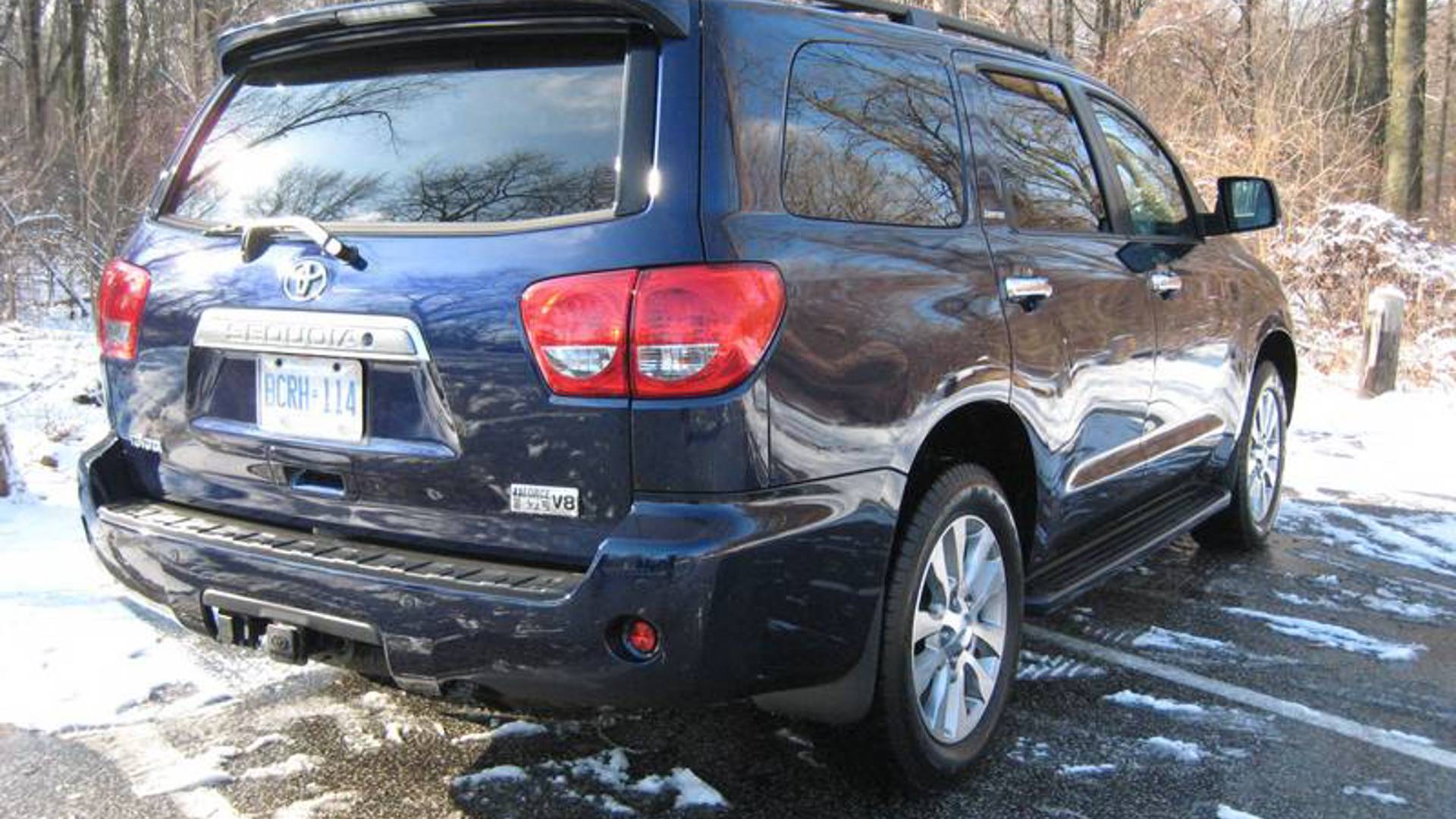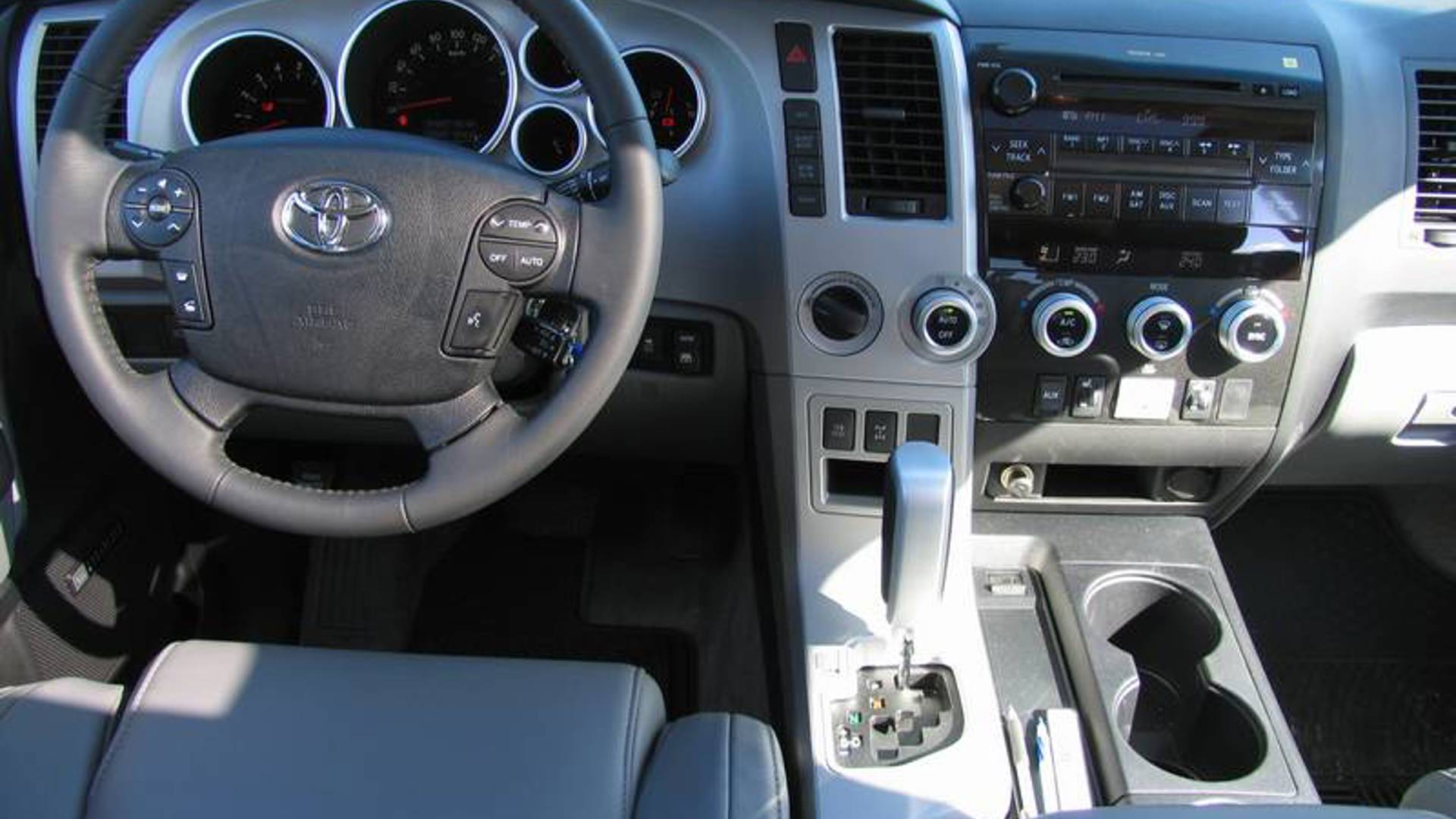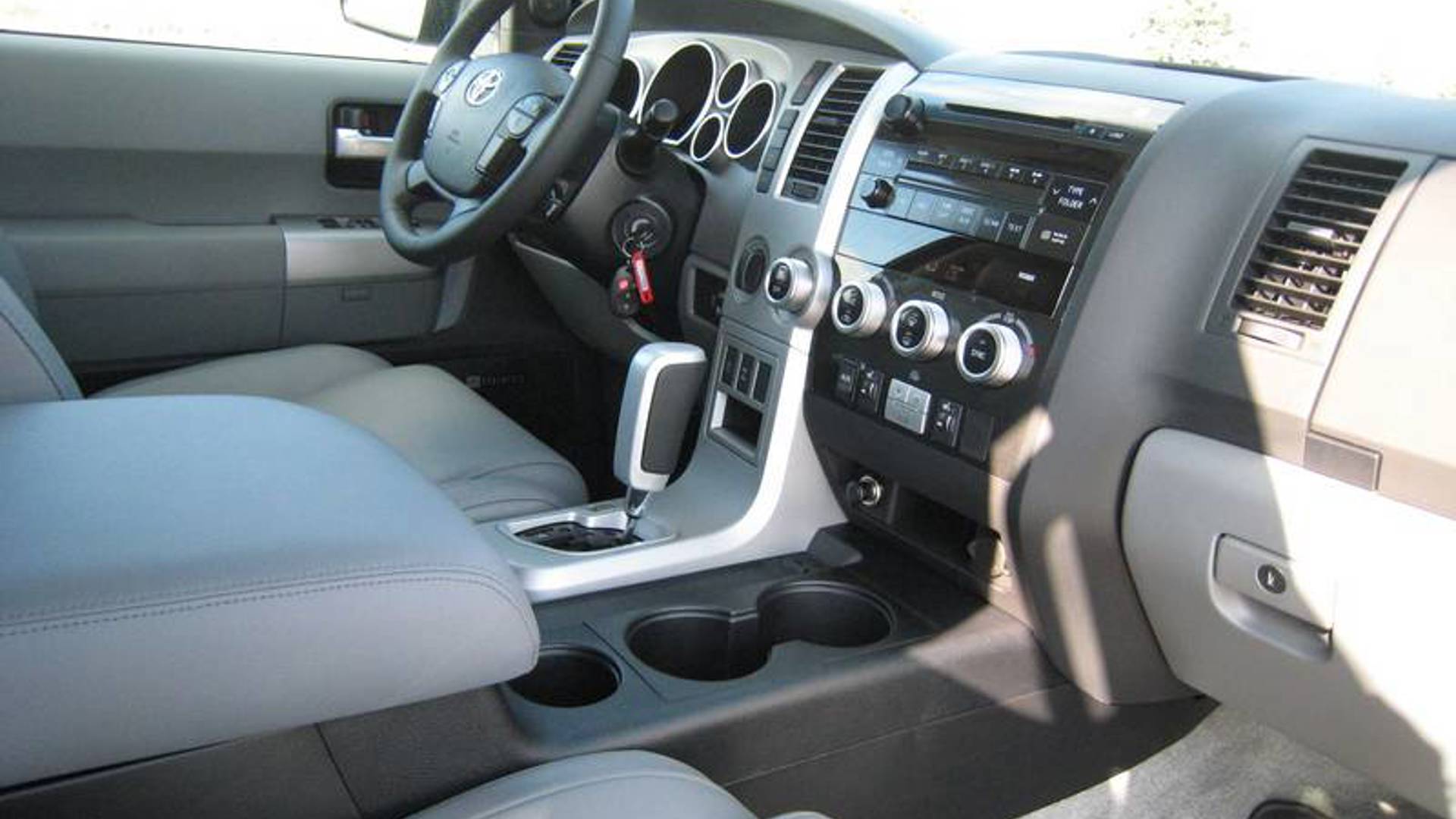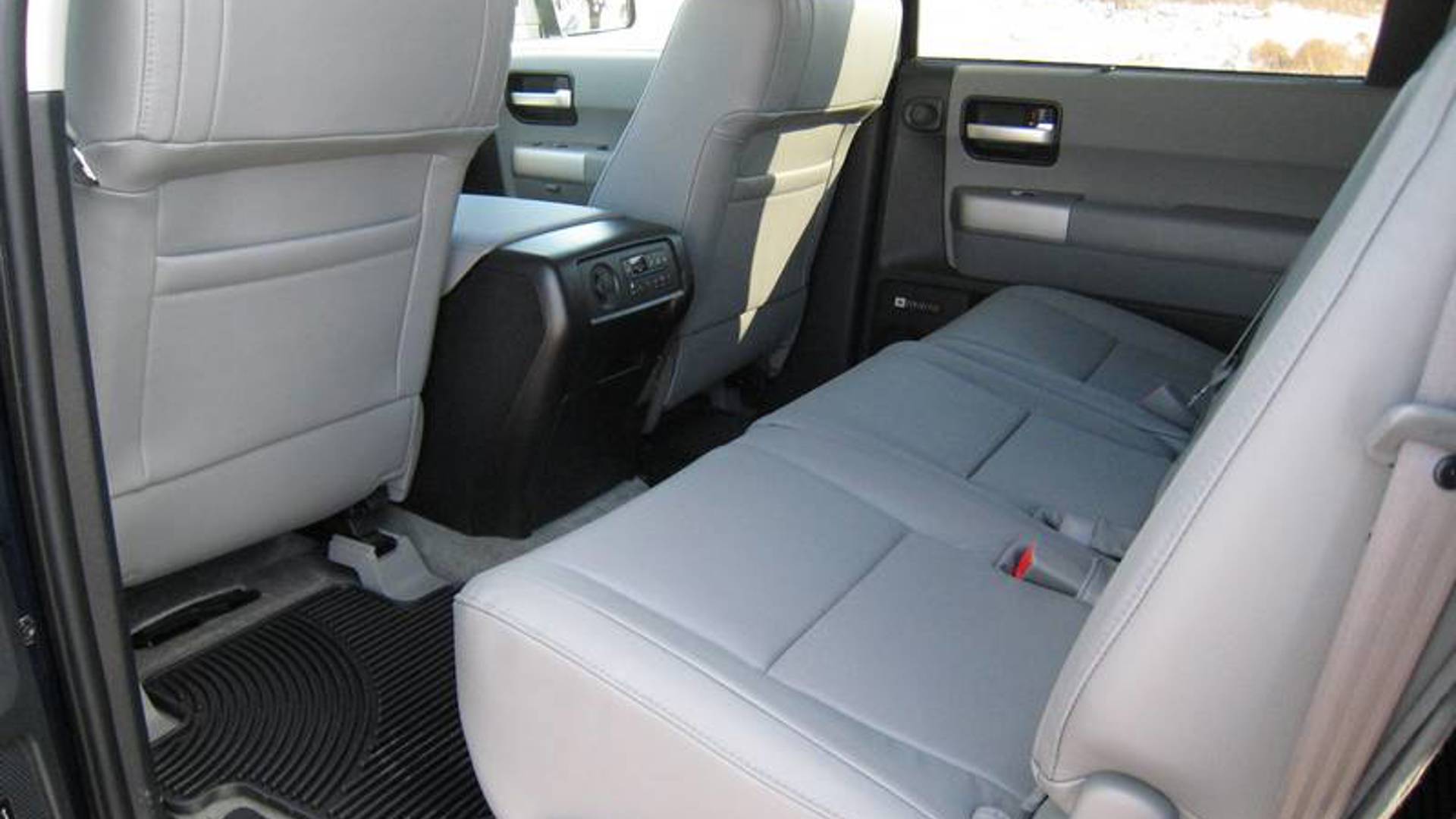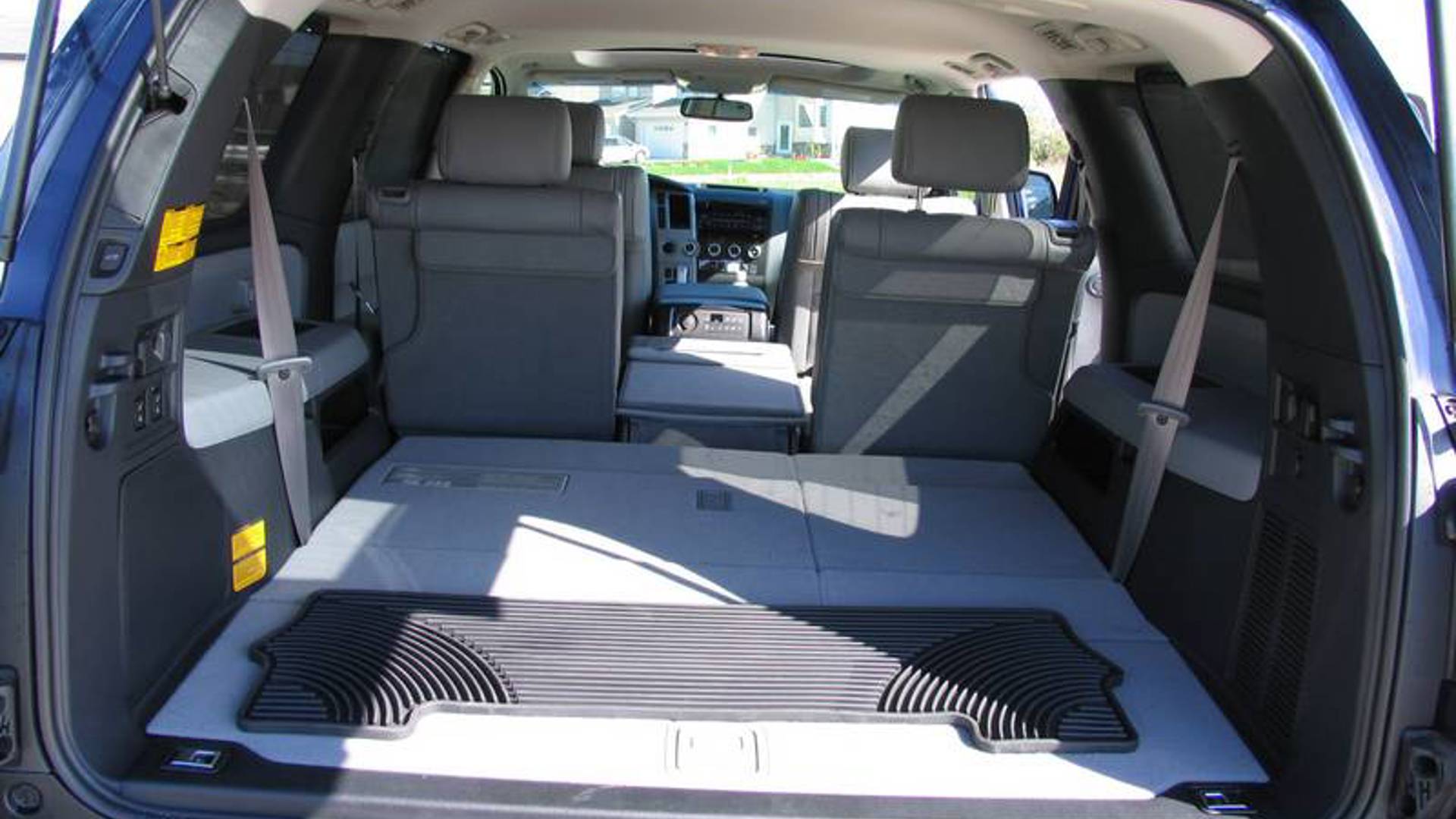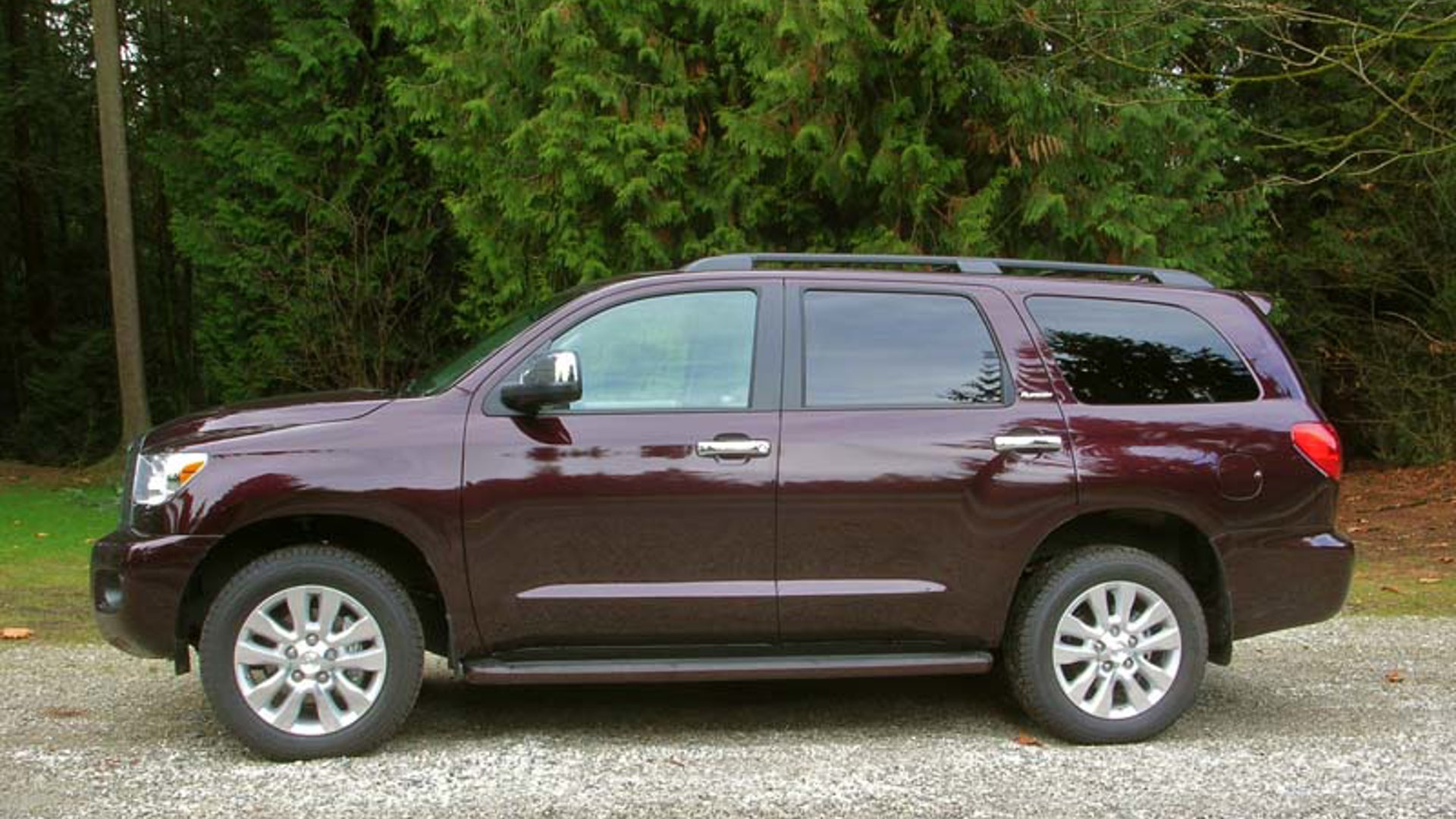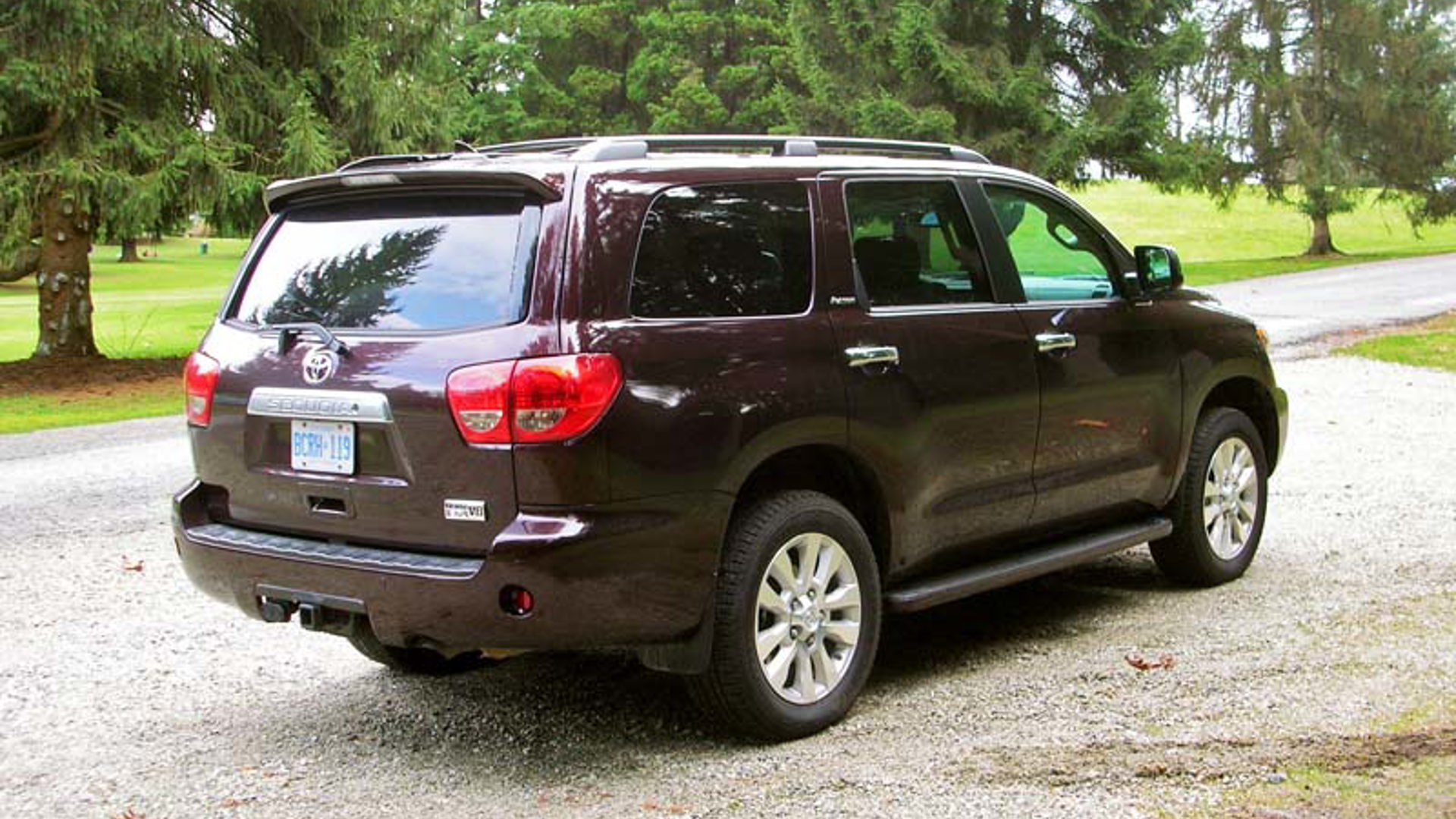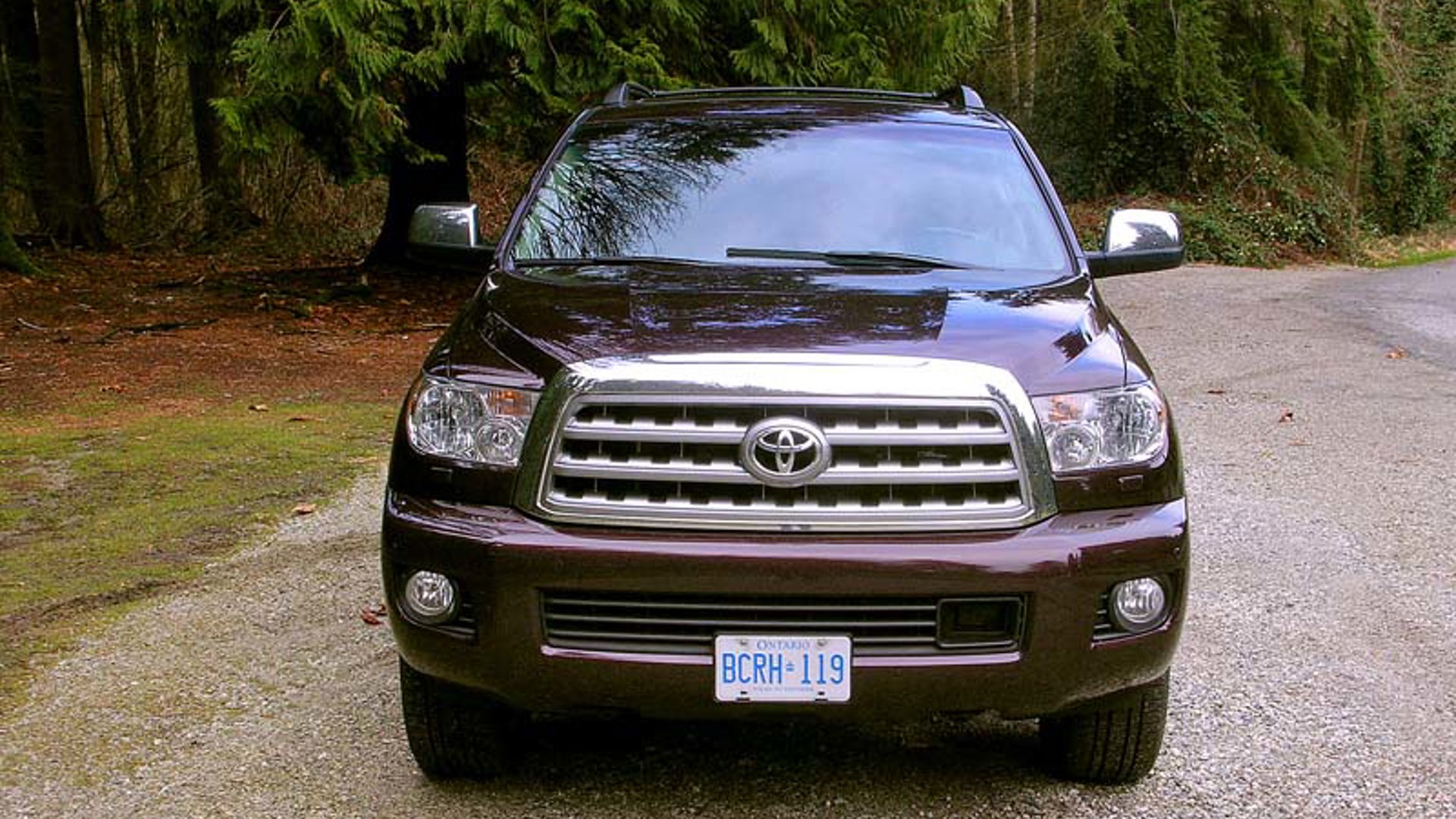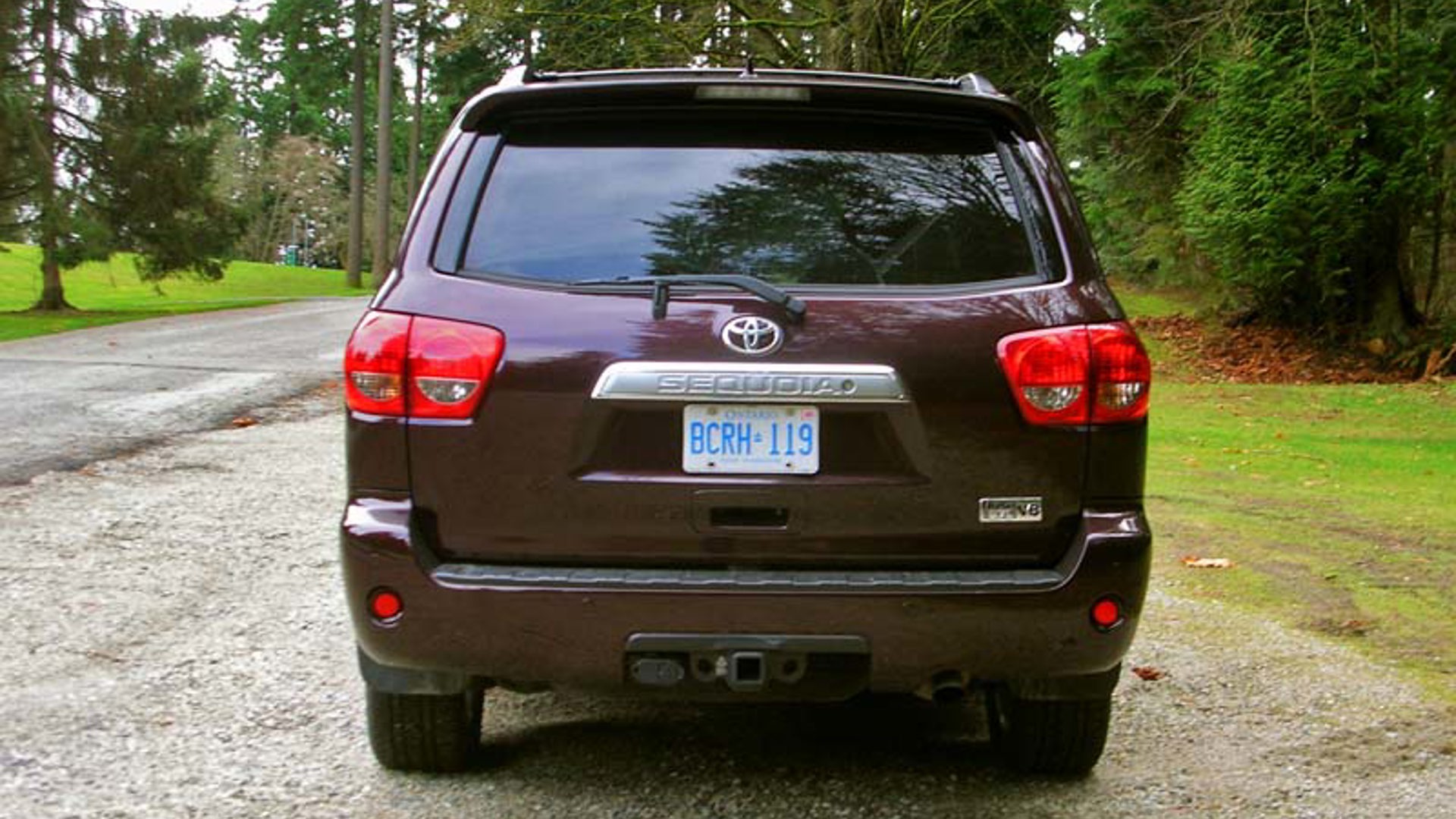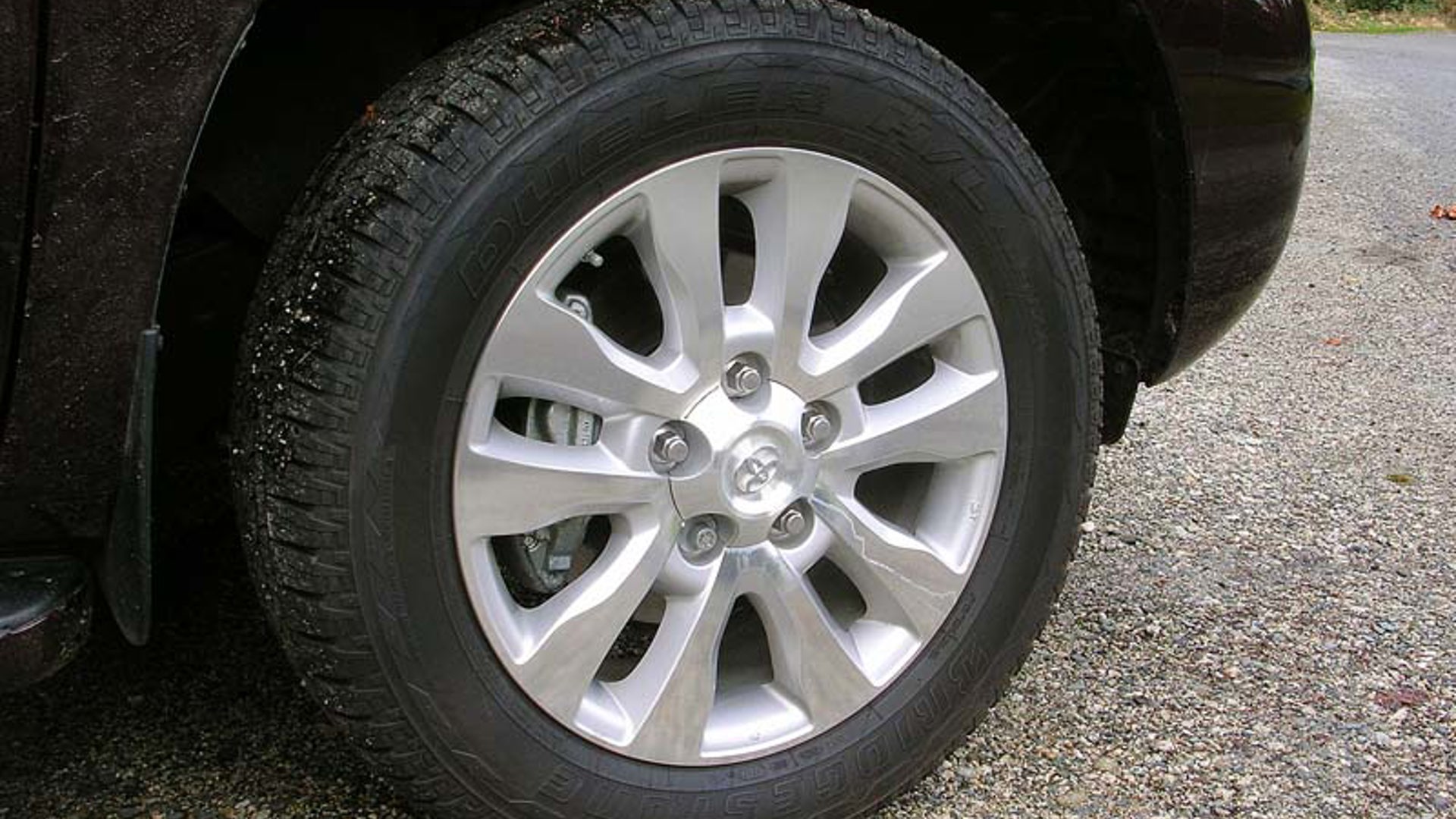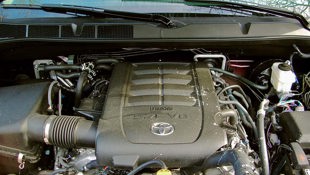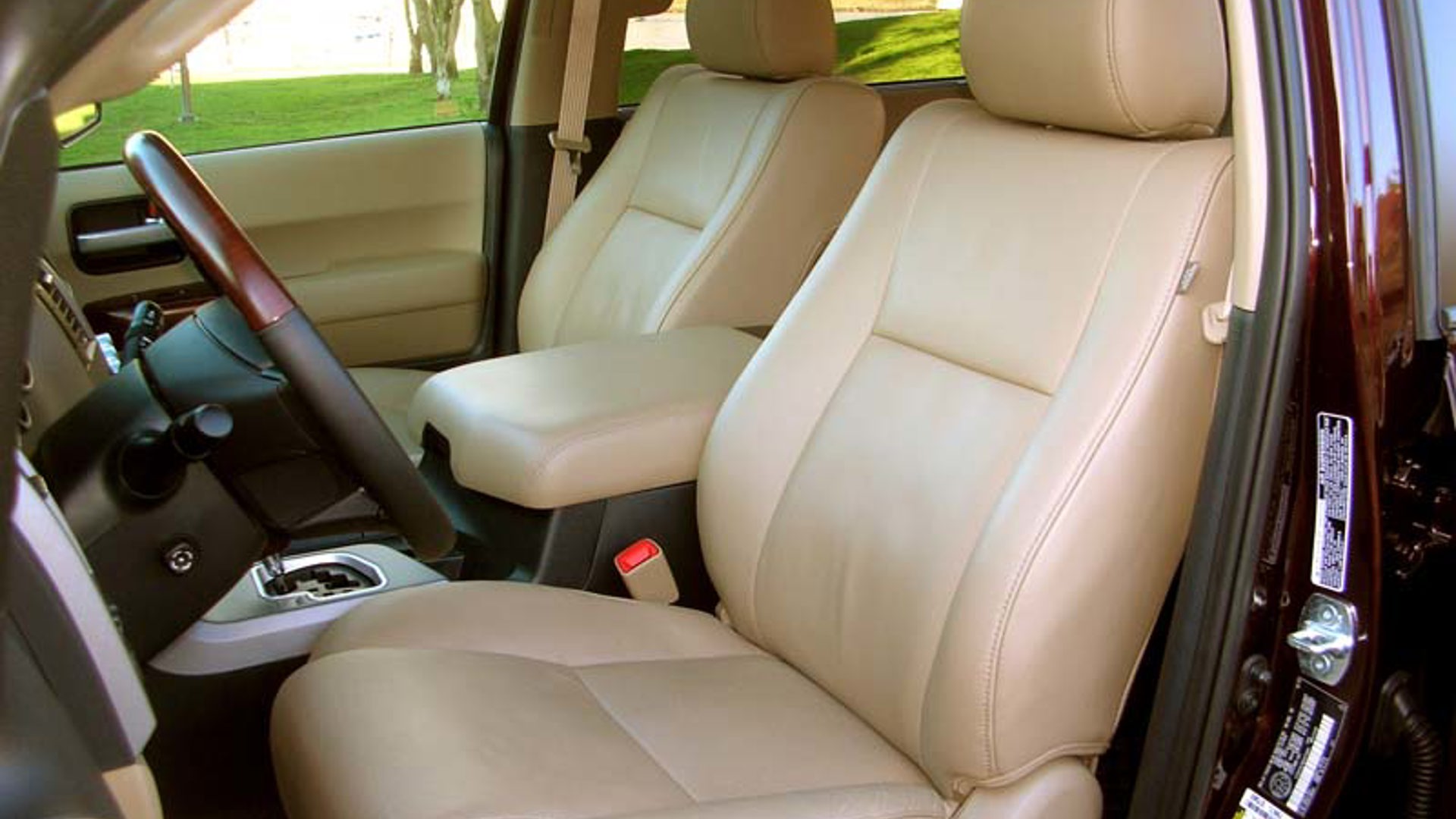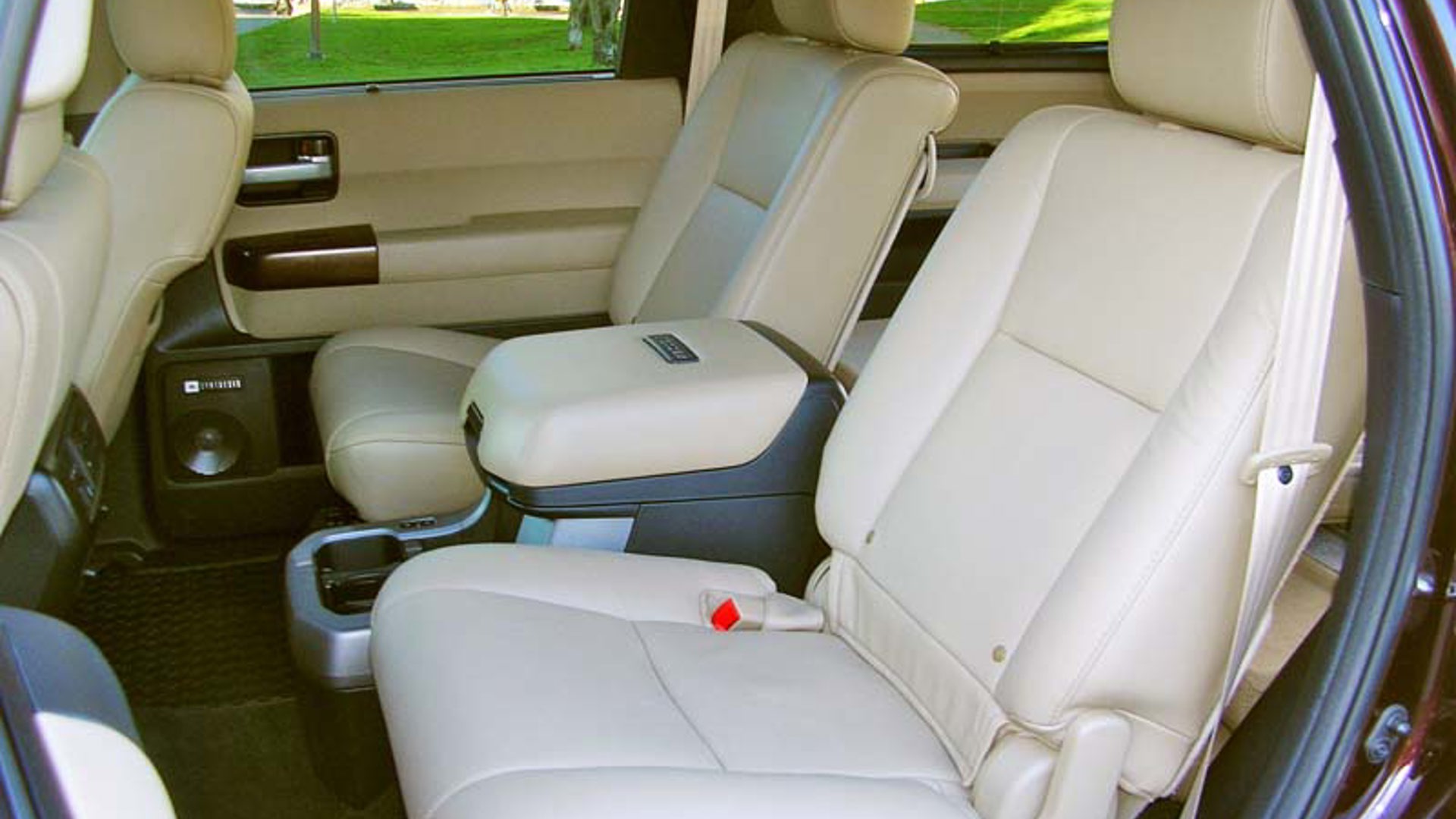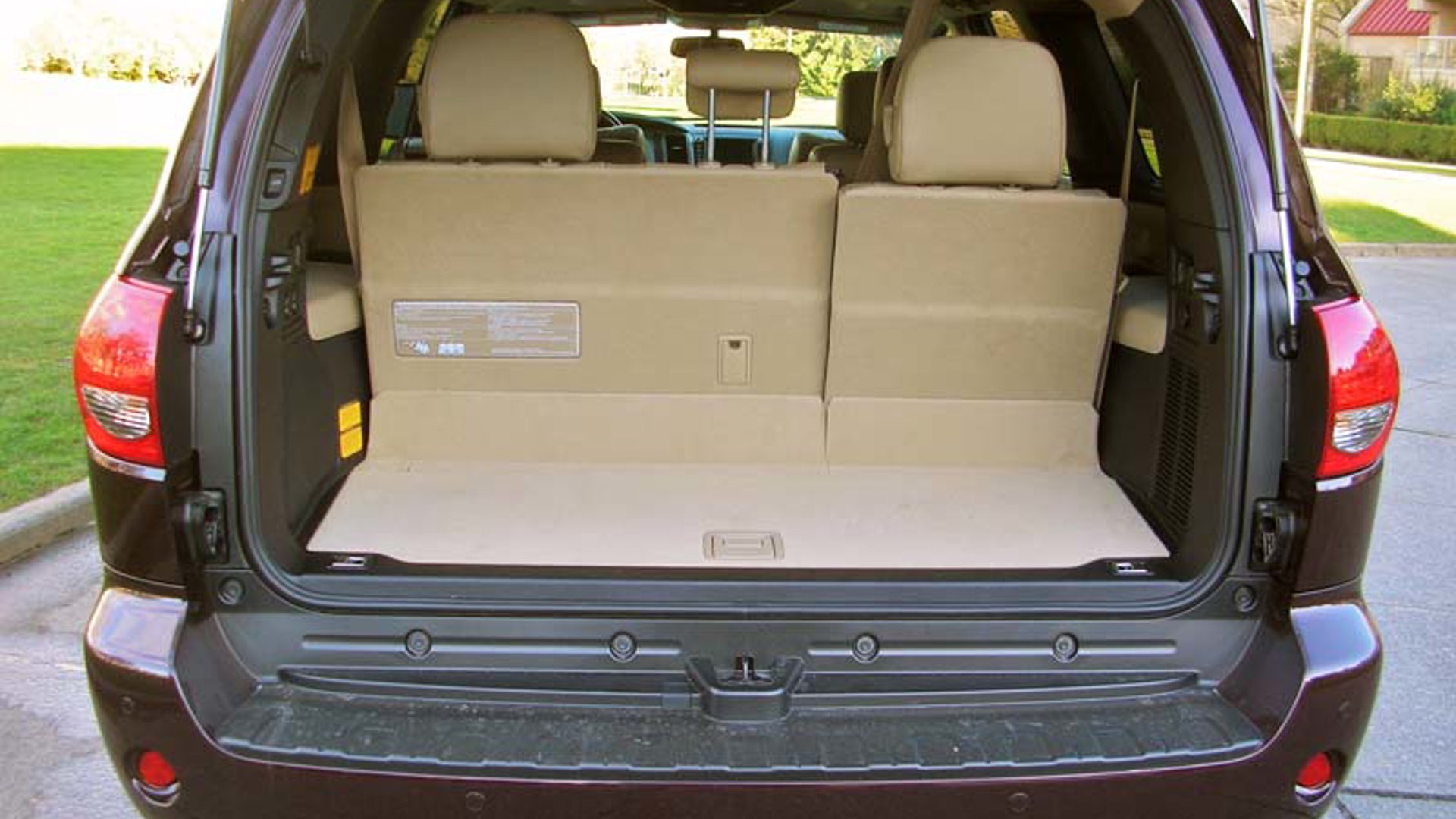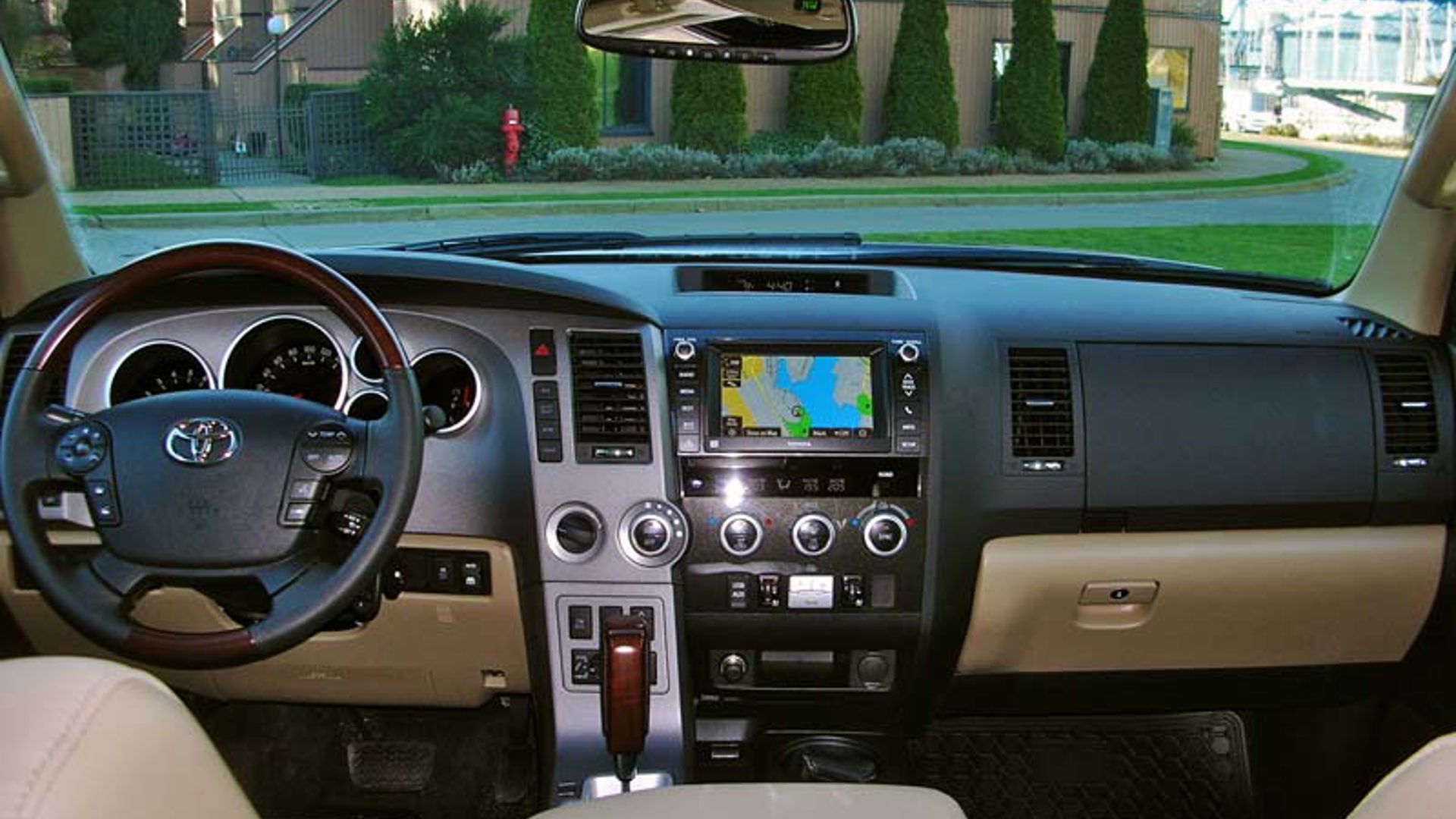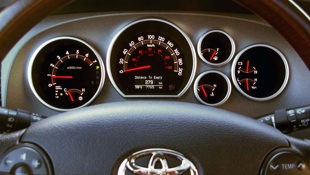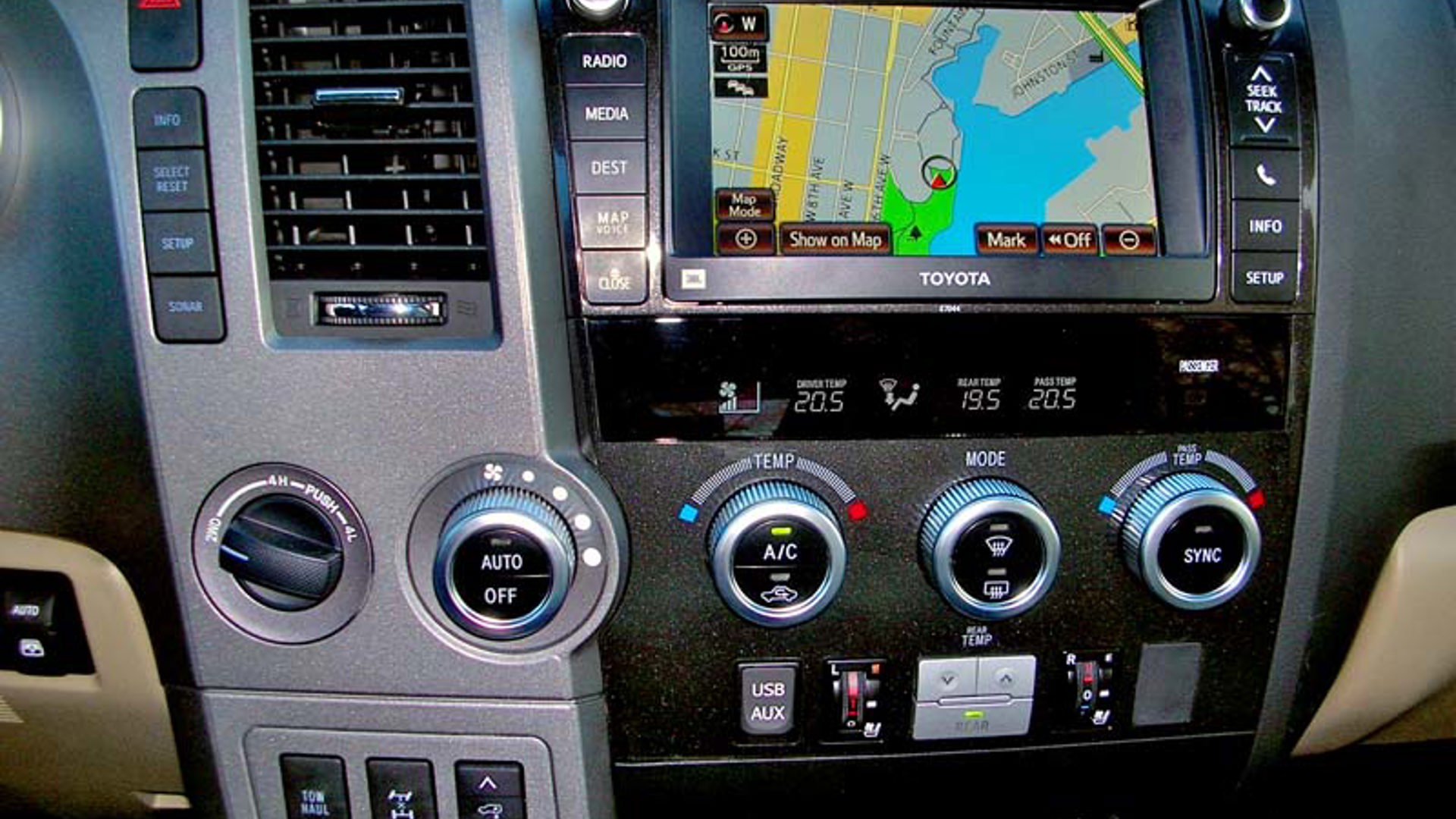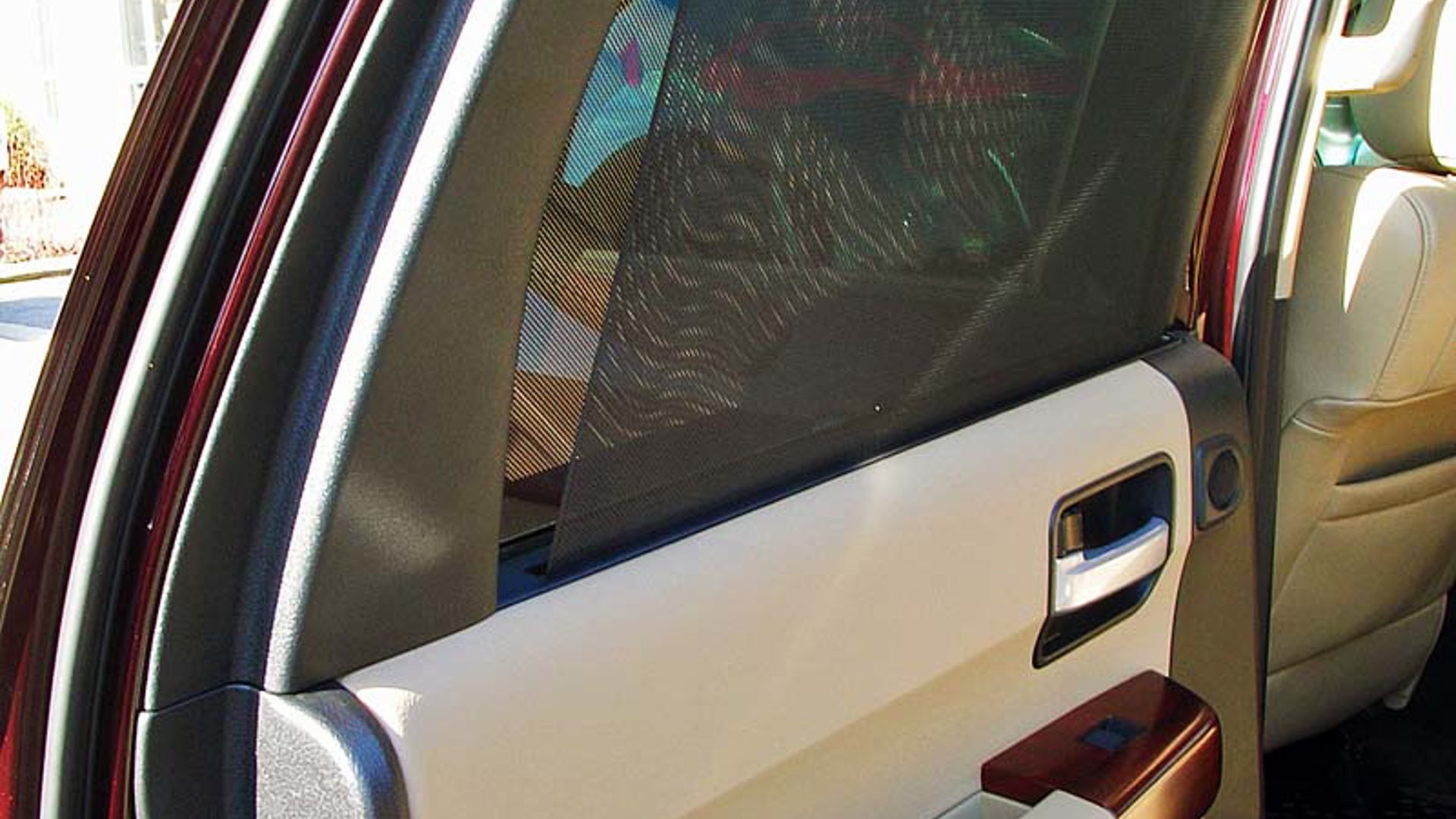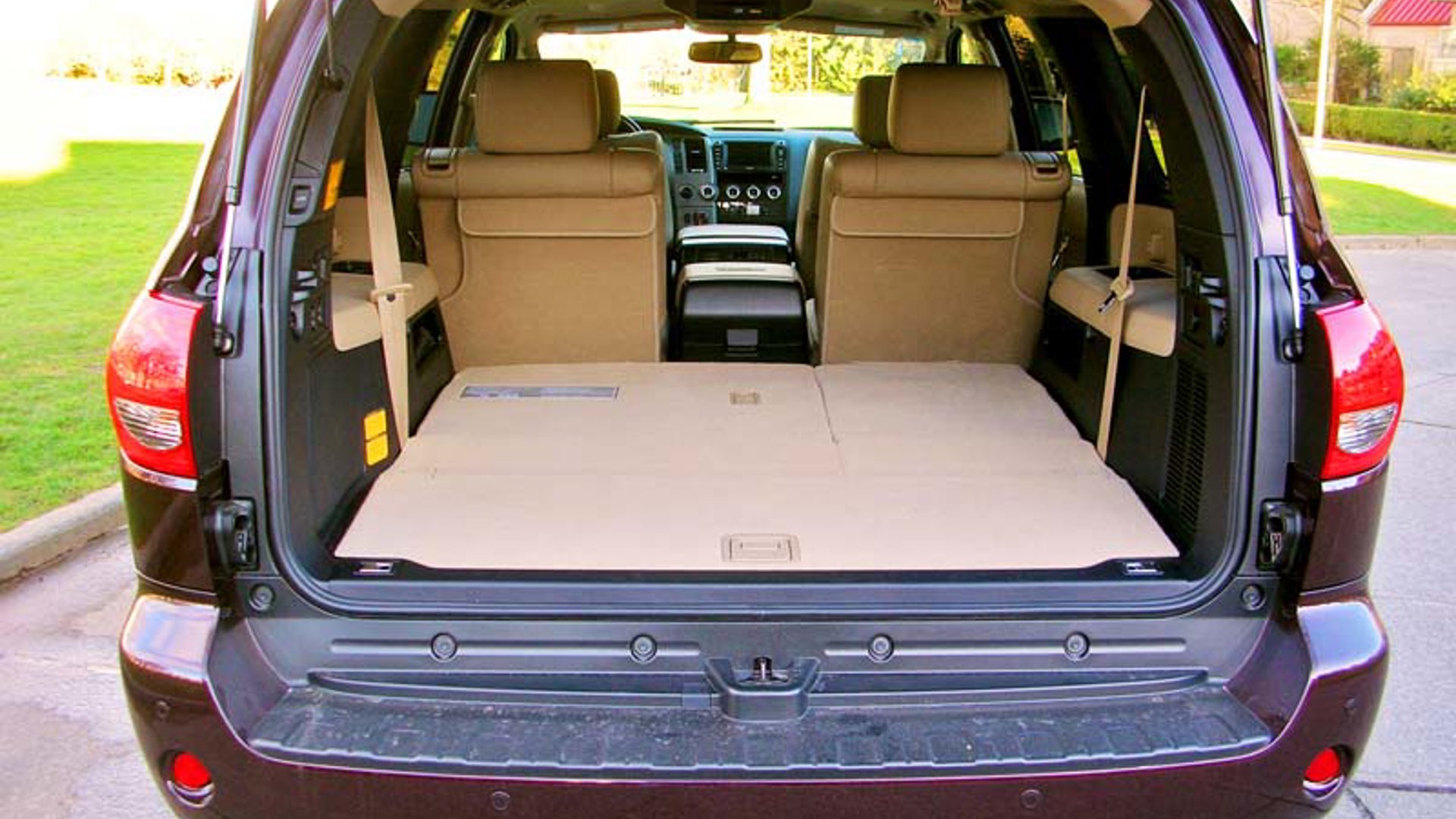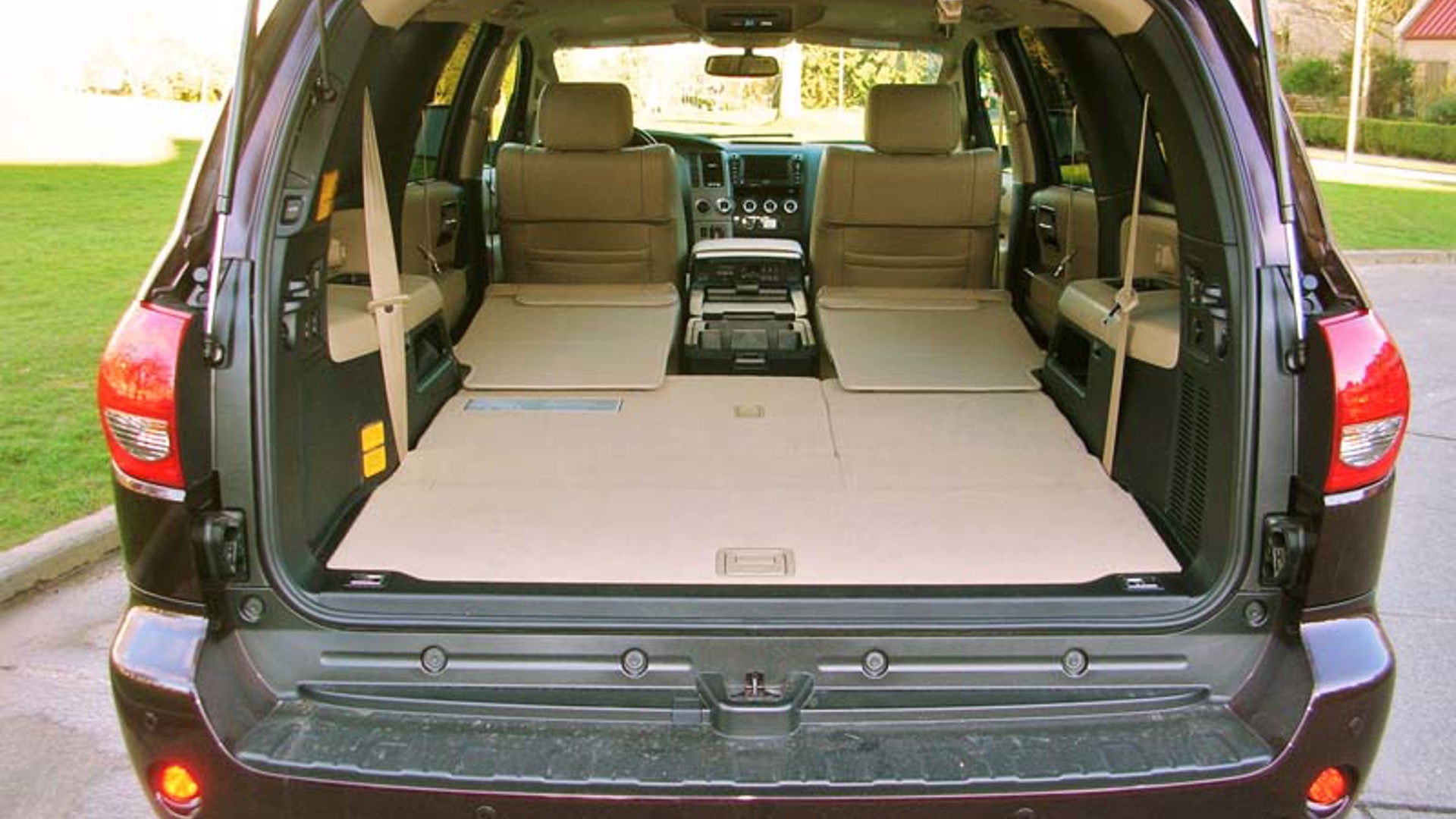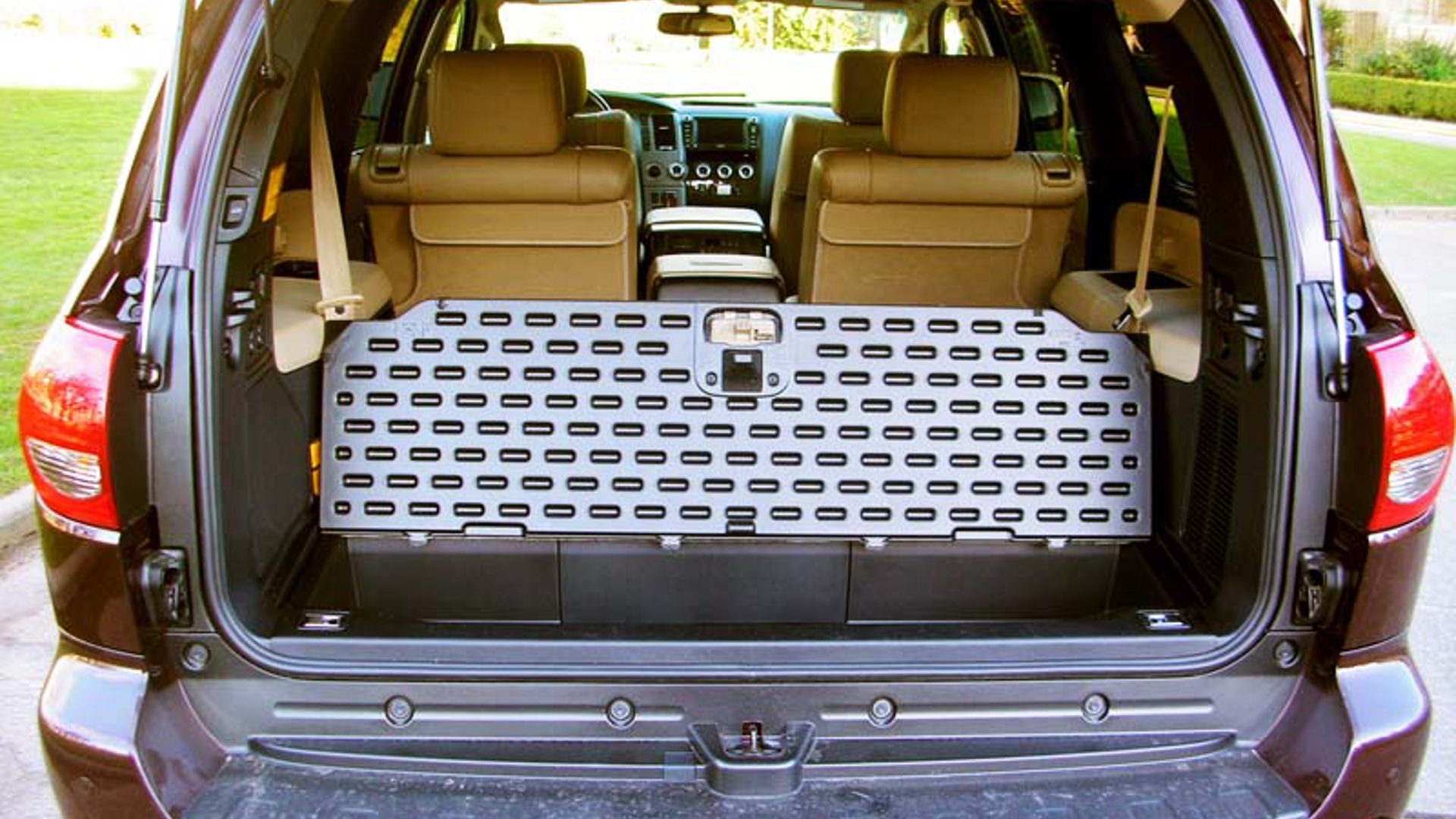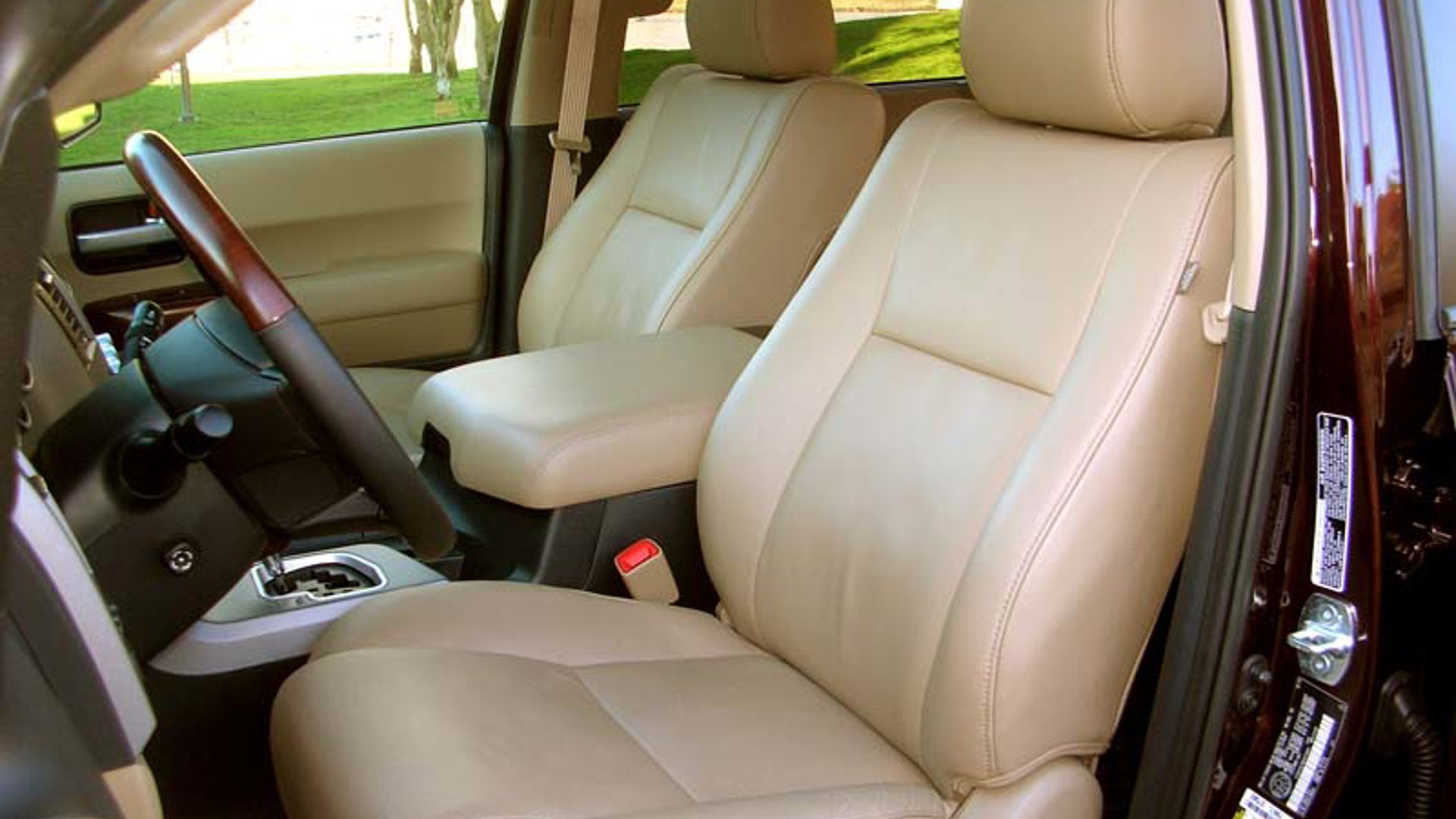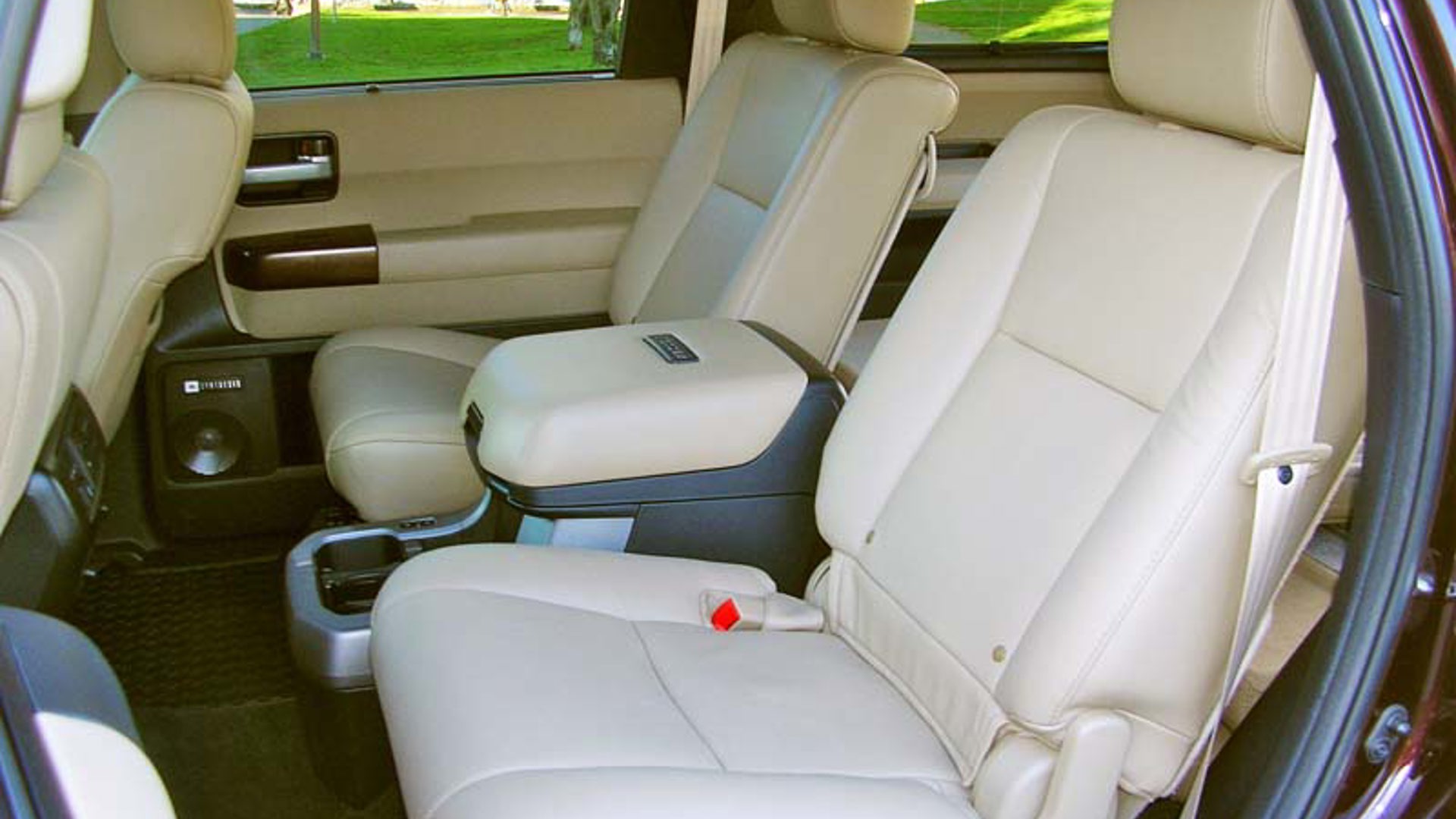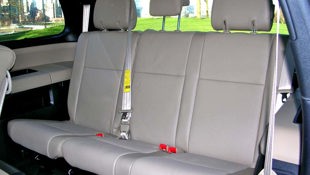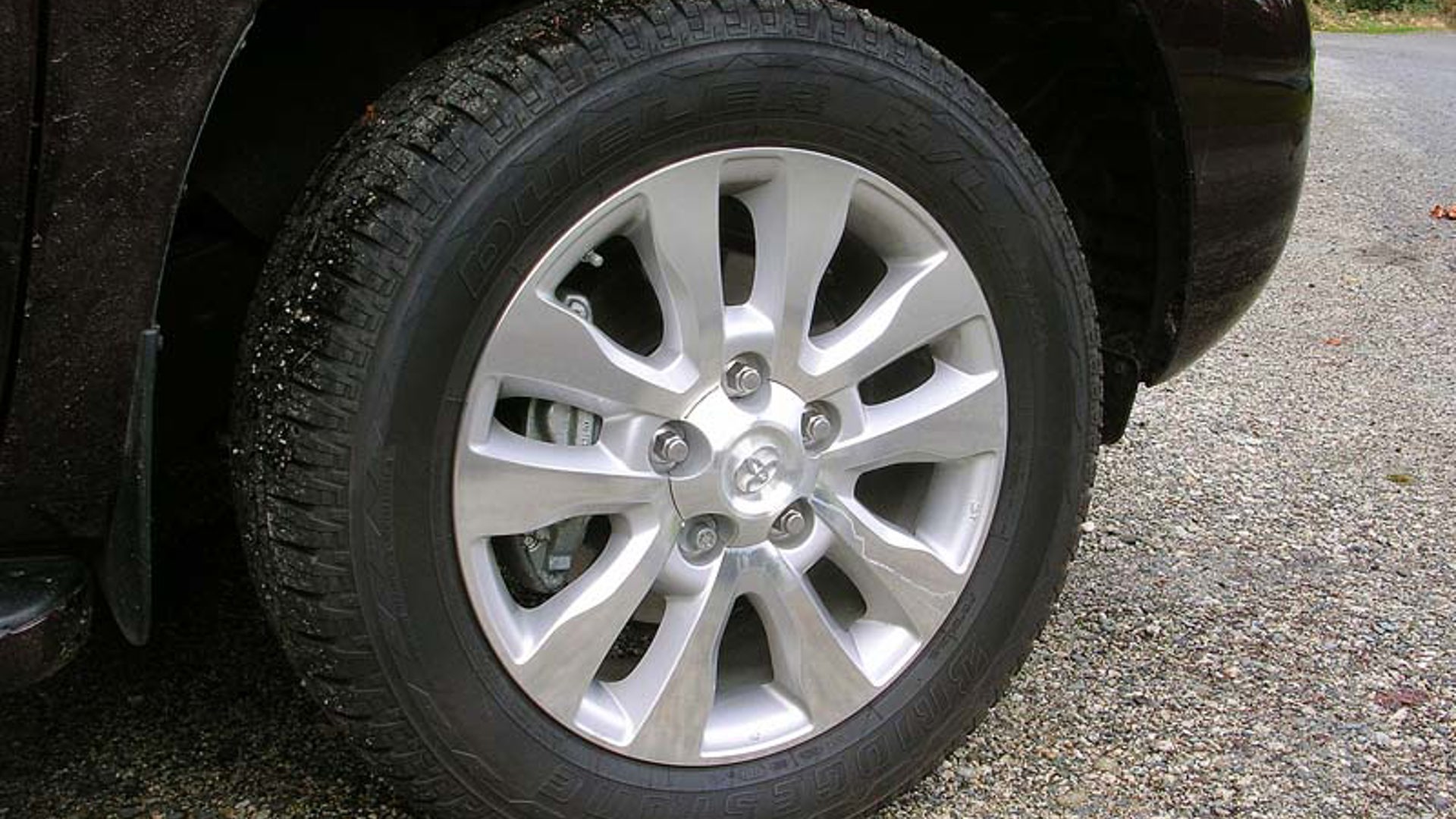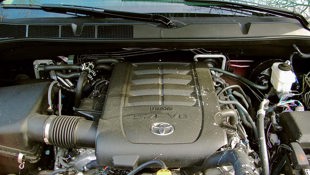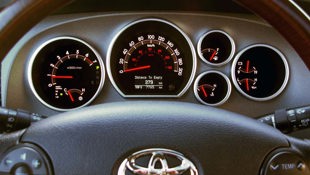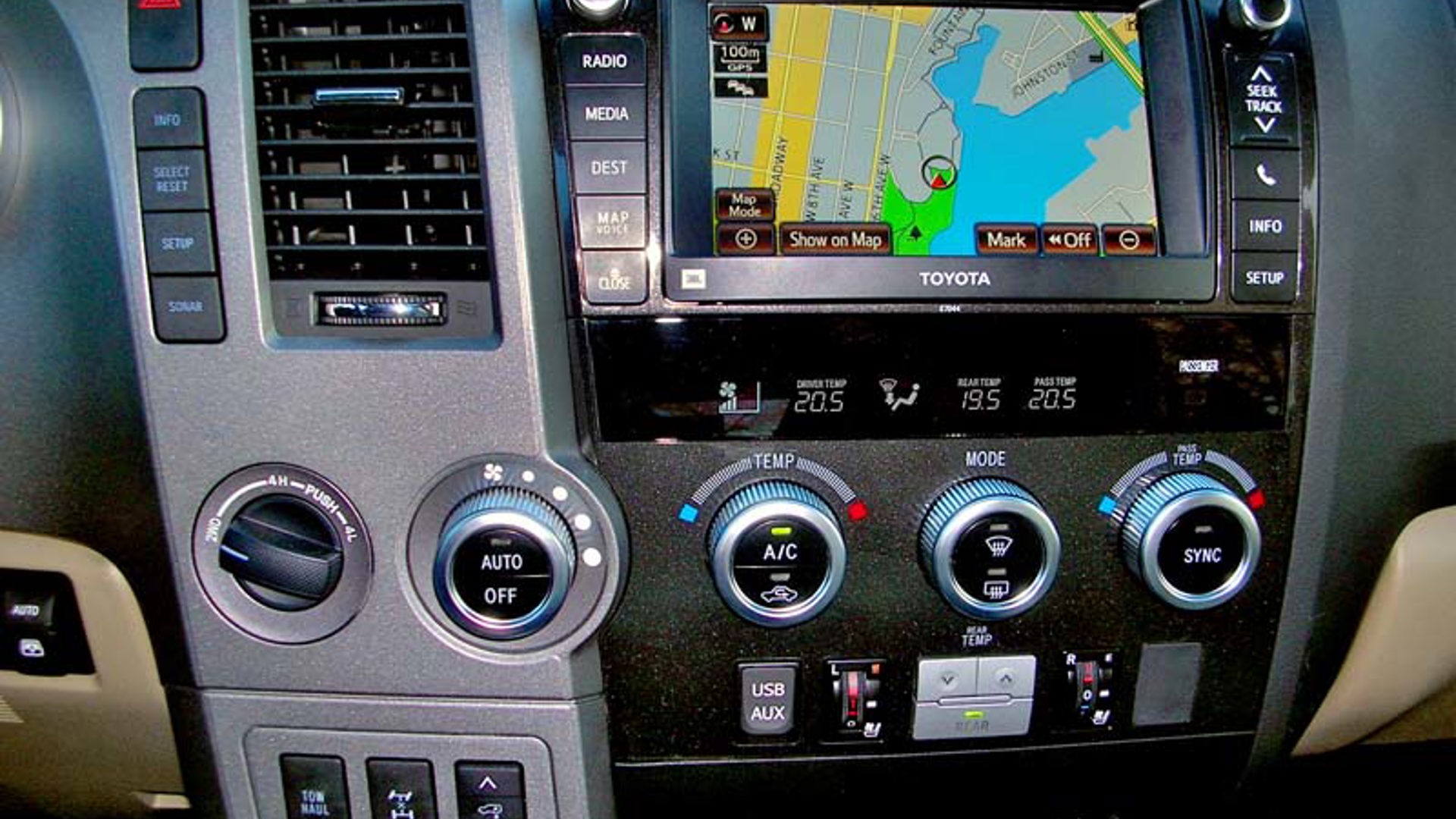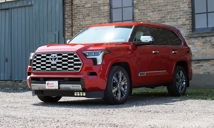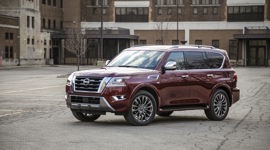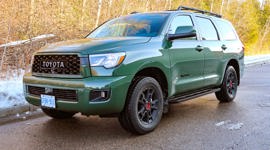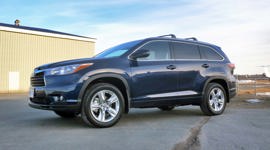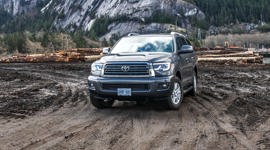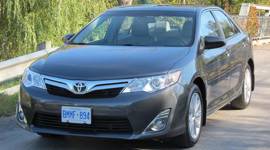Vehicle Type
As one owner put it, “It’s the perfect combination of family minivan and tough truck.”
SUV
History/Description
The Tundra-based Sequoia was Toyota’s shot at large SUV models from Ford, GM, Nissan, Dodge, and others. Built on a solid truck frame and equipped with standard V8 power, the Japanese brand’s biggest utility vehicle offered up plenty of space, capability and power, with the brand’s reputation for quality and strong resale values baked right in. Launched initially in its current generation for model year 2008, numerous updates and revisions were applied over the years.
Reliability and long-term satisfaction were some of the key factors that attracted shoppers to the Toyota Sequoia, as was brand loyalty. If you’re a die-hard Toyota owner after full-sized SUV functionality, a used Sequoia might just be the ticket.
Engines/Trim
Look for V8 power as standard across the board, with 4.6L, 4.7L and 5.7L engines available, depending on the year. Output was rated at 275, 310 or 380 hp, respectively. All units ran an automatic transmission with five or six gears, and an on-demand 4WD system provided instant access to additional traction. From 2010, a 4.6L engine replaced the aging 4.7L unit, with improved power and mileage.
The Sequoia SR5 came online from 2009, offering a high-value model with the 5.7L engine and a feature set designed to keep the price down, and gear this model up for use in hard-working environments.
Look for three available seating rows, plenty of safety equipment, and feature content that included a voice-activated DVD navigation system, rear-view camera, rear-seat Blu-ray player, radar-guided cruise control, and more. Wheel and tire packages, cargo organizers, protective implements and special off-road equipment could all be specified through Toyota’s far-reaching accessory program. Towing capacity exceeded 9,000 pounds, depending on the year, model and equipment.
What Owners Like
Size, sturdiness, capability, flexibility and an abundance of on-board space are commonly reported as positives by Sequoia owners, with generous power from the 5.7L engine and overall driveline refinement also rated highly. The back-up camera and parking sensors, as well as the available radar cruise control system, are among the owner community’s feature content favourites. Maneuverability, despite the Sequoia’s size, is also positively rated. As one owner put it, “It’s the perfect combination of family minivan and tough truck.”
What Owners Dislike
Unsurprisingly, fuel economy is, by and large, the only owner-stated complaint common enough to worth mentioning – though some owners who frequently pull a heavy trailer do wish for more confidence-inspiring brakes.
Here are some Toyota Sequoia owner reviews
The Test Drive
Many Sequoia owners report few if any issues or concerns outside of regular maintenance, but a few checks are advised if you’ll be hitting the market in search of a new-to-you unit.
First, as it tends to go with any 4x4 vehicle that may have been used in severe or off-road driving, a mechanical pre-purchase inspection (PPI) is highly advised. In about an hour, and for under $200, a technician can quickly assess the used Sequoia’s underside for signs of damage or rust, check suspension components, axles, fuel and brake lines and driveline components for issues relating to wear and leaks, check all consumable parts like tires and brakes, and run a diagnostic scan to reveal sensor or wiring-related issues.
Second, if you’re the average shopper, you’re typically best to avoid a used Sequoia that’s been modified. Common upgrades to this vehicle include oversized tires and wheels, and suspension modifications like lift kits.
Though these modifications are enjoyed without issue by many owners, poor-quality parts or installation can negatively affect vehicle durability, fuel efficiency and even safety. Note that, for instance, lifted suspension can contribute to axle wear and leaks in some situations. Translation? Unless you’re well-versed in the world of Sequoia modification, stick to stock for best results.
If the vehicle you’re considering is equipped with the available air suspension system, consider avoiding it. Your writer has yet to find a vehicle equipped with this type of suspension that doesn’t result in fairly hefty repair bills as it ages, and across numerous brands and vehicle genres, air suspension seems to be more trouble than it’s worth in the long haul. Here’s a discussion in a Toyota Sequoia owner’s forum where many owners report minimal issues with the air suspension system to date, though many wonder if they’re on borrowed time.
Owners taking to internet forums have also discussed strange vibrations or shuddering sensations which have a number of possible causes, none of which are conclusive. If the Sequoia you’re considering exhibits any of the symptoms mentioned in this discussion, which may include a consistent shudder or vibration at a certain speed range, have a Toyota technician investigate, possibly focusing on the driveshaft, axles, tires, wheels and transmission.
Confirm that all door handles, both inside and out, work as expected, trying each a few times. If the door handles stick, fail to return to their closed position, or otherwise fail to operate as expected, they may require replacement, cleaning, or lubrication. Here’s some more reading, including information on possible extended warranty coverage of the door handles on affected models.
Next up, move under the hood, with the help of a mechanic, or mechanically inclined friend, if needed. Be on the lookout for signs of a somewhat common but not concerning squeaky serpentine belt, which will need to be replaced. Next, and especially if the model you’re considering is running the 5.7L engine, be sure to have the engine inspected for oil leaks, especially from the cam tower area. Some owners have also reported issues with leaky water pumps, which tend to produce a small, controlled coolant leak for some amount of time before they fail outright. Here’s some more reading.
Note that both of Sequoia’s more commonly reported leaks should be easy to spot on a pre-purchase inspection, and that many owners with the cam tower oil leak simply choose to live with it, and monitor oil levels, due to the repair cost.
Other checks should include the air conditioner system, with shoppers advised to confirm proper operation of the A/C in both front and rear seating rows. Further, while parked, wiggle the steering wheel of the Sequoia you’re considering back and forth a half-turn or so, rapidly. You’re listening for any popping or clunking sounds, which could indicate a problem with the power steering rack.
The Verdict
Most of Sequoia’s commonly reported issues are of the minor variety, and should be easy to detect on a pre-purchase inspection, or a test drive with a mechanically inclined friend or loved one. If the unit you’re after checks out with a clean bill of health, and hasn’t been subjected to extensive modifications, you’re well on your way to enjoying a flexible, capable and spacious family hauler that’s ready for a multitude of activities.
Here’s a list of recalls.
Crash Test Ratings
N/A
